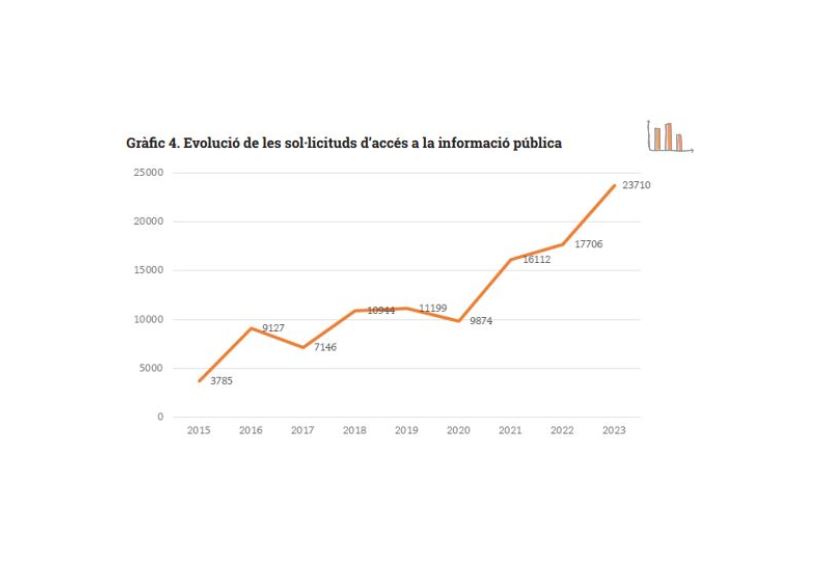- Open government
- Electronic processing
Plain language and clear communication in e-TRAM: what we have done and where we are going

The Ombudsman has published the report "The right of access to public information 2023”, a document that monitors one of the areas that, according to Law 19/2024, of December 29, on transparency, access to public information and good governance, this body must evaluate: that of the access to public information, that is to say, the subjective right of people to request and obtain the information held by the administrations.
According to this report, during the year 2023 there has been an increase of 34% of requests for access to public information.
In this sense, and if we look specifically at the entities that currently have the electronic processing e-TRAM solution offered by the AOC (currently one thousand), we notice that the electronic processing data for the "Request for "access to public information (SAIP)" follow the positive evolution that the Ombudsman's report has identified.
So, if 2022 SAIP e-TRAM procedures were carried out in 2.482, in 2023 this figure increased to 3.246 procedures, that is to say, an annual increase of more than 30%. This data is very much in agreement with the Ombudsman's report, which indicates a global increase in the processing of SAIPs of 34% (for all the public administrations analysed, and for all available processing channels) .
Taking into account that the increase in requests has occurred mainly at the municipal level (in town councils of municipalities with less than 5.000 inhabitants), the syndic appeals for the support of supra-municipal bodies to get these standardized procedures approved and also to train the staff who work in these administrations.
It is worth saying that despite this increase, only 5% of the administrations have a procedure to process the requests for access to public information that they receive and only 17,4% have an information unit, which is the body in charge of processing and managing these requests, according to the regulations.
The report also notes that 15% of requests are not resolved, and that in 42% of the cases that have been evaluated had to demand delivery of the information after the Administration did not respond to the request.
With regard to the forms, the Grievance Ombudsman has on several occasions requested rectifications in them
forms that had previously been implemented in the administrations. An example: remove motivation as a required field. The AOC Consortium removed this obligation in 2021 and this has resulted in a reduction in the number of municipalities requesting it, from 96% to 4%. In this sense, the Ombudsman highlights "the effort of the AOC Consortium, to the extent that any change incorporated by this consortium to the form model has a direct impact on the forms of many administrations.
Another element that needs to be improved is that 84% of the administrations are not classified thematically access requests, so they cannot detect the most recurring requests. Therefore, it is necessary to adopt a homogeneous thematic classification criterion as done, for example, by the AOC Consortium, in accordance with the classification model proposed by the Network of Open Governments of Catalonia (XGOC).
Shortcomings are also detected in the notifications of these resolutions, because they are often sent by email and do not meet the requirements established by the regulations or provide all the information that must be included in any communication. So, for example, in 63% of cases, the person is not informed of the means of recourse available to them in case you do not agree with the resolution.
Clear communication
The trustee states that, if we want a more transparent and accessible administration, the resolution and the documentation delivered must be written in much clearer and understandable language. It also points out that the resolutions should include information about the person or unit with which to communicate in case of needing assistance or advice. Currently, this only happens in 18% of cases.
It should be noted that in the 100% of the administrations analyzed the application can be submitted in person, although 14% require an appointment to do so. In this sense, the syndic asks to strengthen the face-to-face channel and eliminate this requirement, with the aim of avoiding excluding many people due to the digital gap.